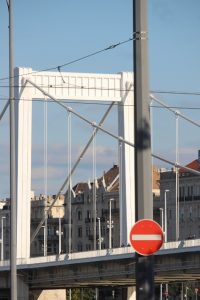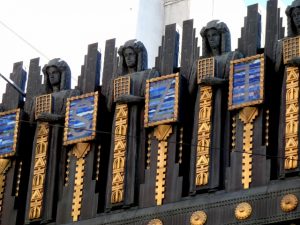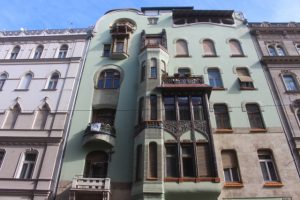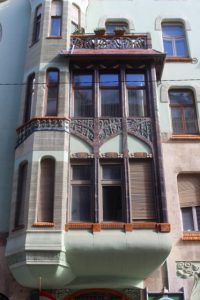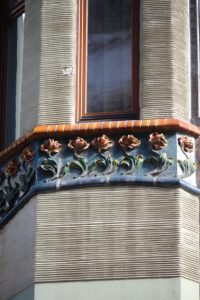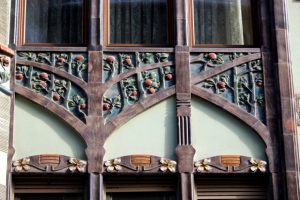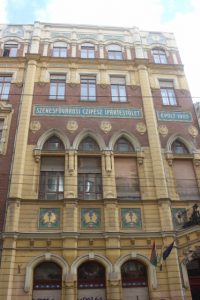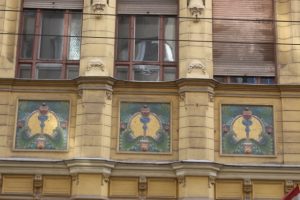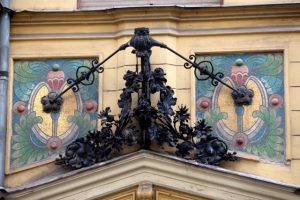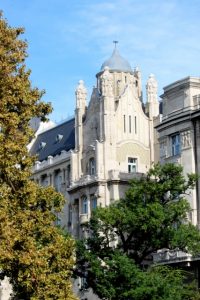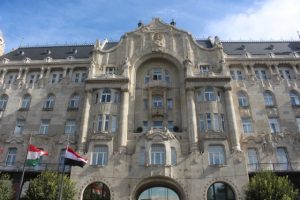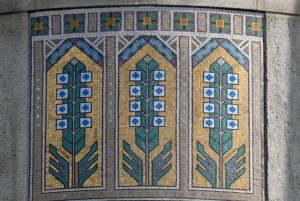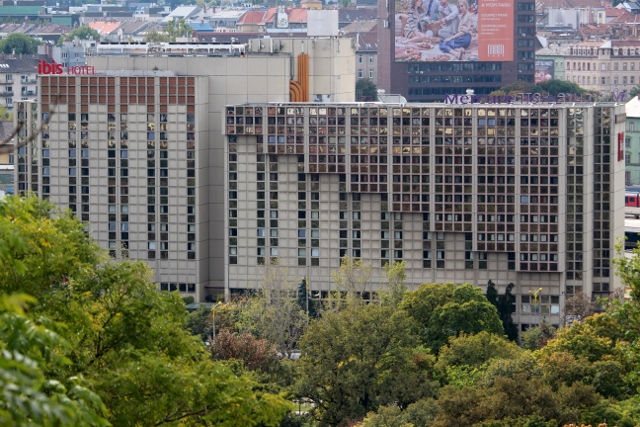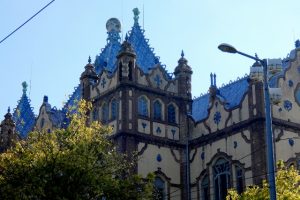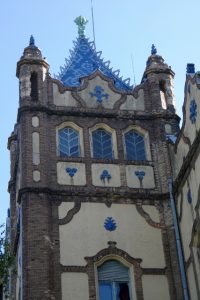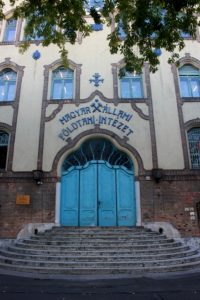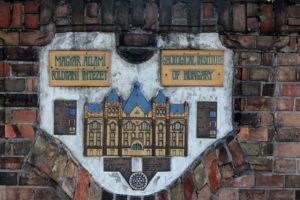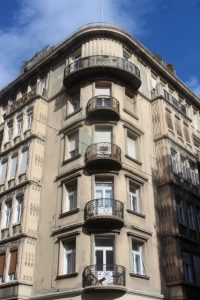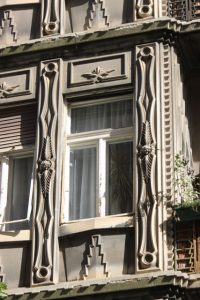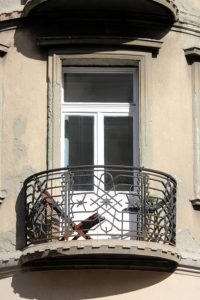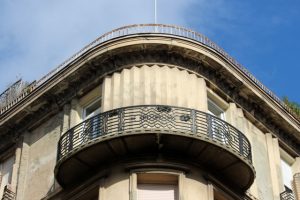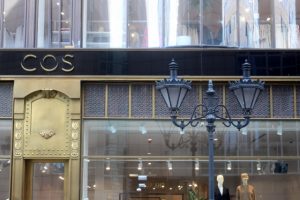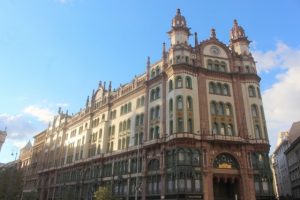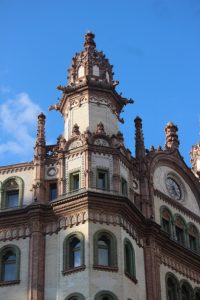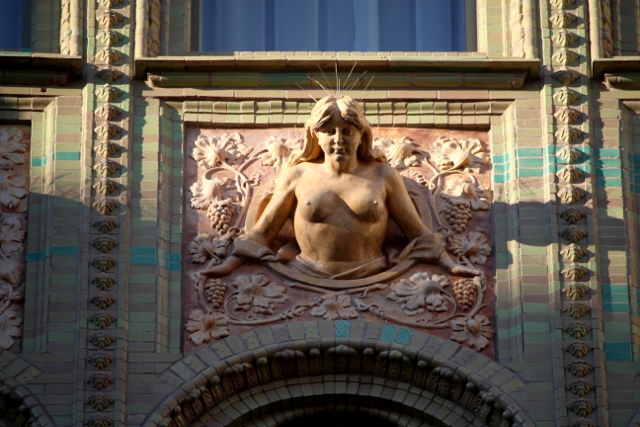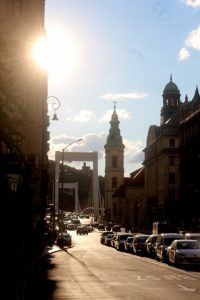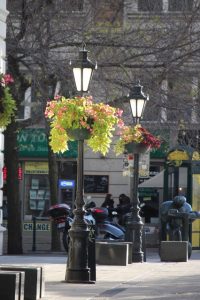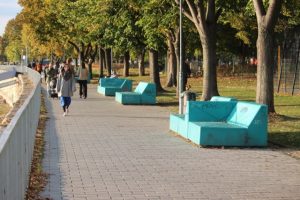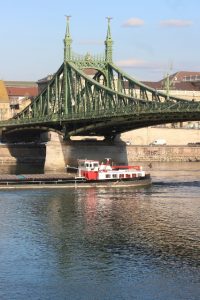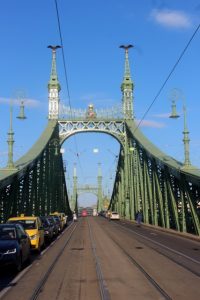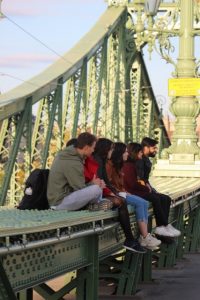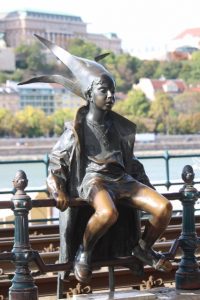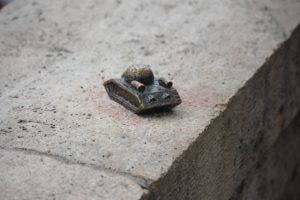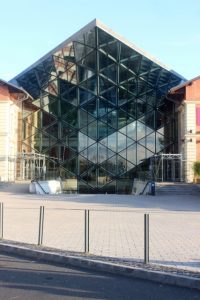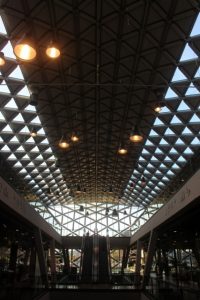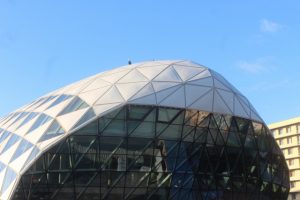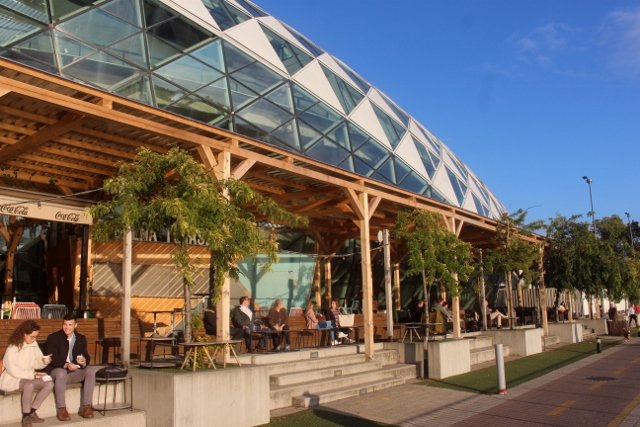A few more examples of Budapest architecture, mostly in the Art Nouveau and Art Deco department, and a pleasant stroll along the Danube almost complete our time on the Pest side of the river.
Of course, there is more to Budapest, even to Pest only. In the previous entry I illustrated a few eclectic style buildings, but at around the same time, end 19th/beginning of the 20th Century, another style was up and coming, Art Nouveau. Characterized by organic, round forms, flowing lines and the like. To which, a little late, Art Deco was a responds: gone were the free-flowing elements, in came the straight lines, the geometrical forms, the industrial designs. Both are present in architectural Budapest, although sometimes I find it difficult to distinguish. That I am not the only one, becomes obvious when I try to consult the internet: there are plenty of sites on the architecture of Budapest, with some claiming a building as Art Deco when another one claims the same building as Art Nouveau. One example is the New Theatre, with its distinctive row of women along its roof edge.
OK, the Bedo House is perhaps the personification of Art Nouveau – no mistakes here -, with the architect moving away from the standard symmetrical designs, which were also part of classical and neo-classical construction. Instead, the building has no central axis, and there is a balcony on one side, just windows on the other. Or look at the Eromuvhaz building, from 1905, now a community centre, with some fabulous Art Nouveau mosaics on the outside. Another great example is the Gresham Palace, initially built for an insurance company in 1906, now housing the Four Seasons Hotel – a dangerous development, as we experienced walking on the pavement in front of the hotel, because the rich and famous staying there do expect to be delivered right to the front door, pavement or no pavement.
In this context one has to agree that modern hotel design cannot match The Four Seasons.
One of the main proponents of Art Nouveau in Hungary was Odin Lechner, who designed, amongst other buildings, the Geological Institute, a bit further away from the centre. Not the discovery of the geologist amongst us, by of my travel companion. A fabulous building, visible from afar, with distinctive blue colours and a few poor geologists on the roof carrying the burden of the world. And there is so much more, just look up and you’ll find treasures in every corner. The façade of the New Theatre I started off with we spotted in a back street.
A great – and unmistakable – Art Deco example is the Apartment Building of the National Alcohol Trading Company (that is what it is called!). All geometry, from the balconies to the window decorations. Another building, with a checkered history, but all the hallmarks of Art Deco, is Biro-Berhaz, also with a distinctive round corner. And there are many more buildings, of which I don’t know the name, neither the history, that are attractive to look at.
More difficult to categorise is the Parizi Udvar, which translates into Paris Court, currently a hotel. This was originally – in 1817 – a shopping mall, was refurbished for a bank in 1913, than fell is disrepair after WWII, only to be reconstructed again in the early 21th Century. It is extravagant, to say the least, with its mosaics, stained glass, buste decorations and the lot; it has been compared to ‘architectural porn’ – and we failed to go inside, big mistake! But it does have a presence, in Budapest! Plus, it has, reputedly, the largest hotel suite in town.
As with the eclectic buildings, I have added a few more Art Nouveau and Art Deco examples here. And I could not resist collecting a series of photos of Budapest balconies, either.
From the above you may have concluded that there is nothing else in Budapest but buildings, which is up to a certain extend correct. Yet, a stroll along the Danube provides great views of the river, and of life along the river. There are, like in Bratislava, lots of party boats. The embankment has been enriched with trees and all manner of seats, which are actively being used in the late autumn sunshine of today. Pity that so many people find the need to spray graffiti, the ugly type not the artistic one. The seats are sprayed; as are many of the buildings, by the way. Some of the bridges are also quite nice, not only to look at, but, apparently, also to while away the afternoon with friends. And like everywhere else in Budapest, you’ll find sculptures in the most unexpected places. Some obvious, some a lot more subtle: you have to be lucky to spot the miniature tank with bended canon.
But at the end of the day we finish with another building again, this time hypermodern. The Balna (the Whale) is a cultural and commercial centre mostly constructed from glass, in 2013; in style quite different from what we have encountered so far in Budapest. Quite attractive, again, and not in the last place because of its terrace, on the bank of the river. We have deserved it – once again.
Next, we finally cross the river to Buda!
